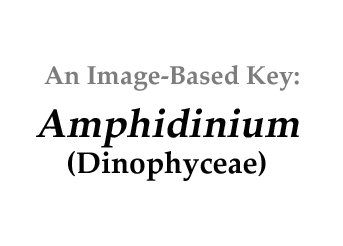|
|
||||
|
Click on images for larger format |
||||
Name derivation |
||||
|
"Double Whirler" -- Double Amphi- whirler or spinner –dinium
|
||||
Classification: |
||||
Amphidinium Claperède and Lachmann 1859 (Guiry and Guiry 2012); 95 of 205 species descriptions are currently accepted taxonomically (Guiry and guiry 2013).
Order Gymnodiniales; Family GymnodiniaceaeCurrently 74 species (out of 205 descriptions) are recognized.Some species have been transferred to new genus Togula (Jørgensen et al. 2004). Other sand-dwelling heterotrophic species have been transferred to new genus Ankistrodinium (Hoppenrath et al. 2012) and Testudodinium (Horiguchi et al. 2012.
|
||||
Morphology: |
||||
|
||||
Similar genera: |
||||
|
Togula; Ankistrodinium, Testudodinium |
||||
Habitat:. |
||||
|
||||
Toxicity:. |
||||
Toxic, produces cytotoxis 25-membered amphidinolide C3 (Kubota et al. 2010). |
||||
References: |
||||
|
Claparède, É. and J. Lachmann 1859. Études sur les infusoires et les rhizopodes. Mémoires de l'Institut National Genevois 6: 261-482. Guiry, M.D. and G.M. Guiry 2012. AlgaeBase. World-wide electronic publication, National University of Ireland, Galway. http://www.algaebase.org; searched on 15 November 2012. Flø Jørgensen, M., S. Murray,and N. Daugbjerg , 2004. A new genus of athecate interstitial dinoflagellates, Togula gen. nov., previously encompassed within Amphidinium sensu lato: Inferred from light and electron microscopy and phylogenetic analyses of partial large subunit ribosomal DNA sequences. Phycological Research 52(3), 284-299. Hoppenrath, M., S. Murray, S.F. Sparmann, and B.S. Leander 2012. Morphology and molecular phylogeny of Ankistrodinium gen. nov. (Dinophyceae), a new genus of marine sand-dwelling dinoflagellates formerly classified within Amphidinium. J. Phycol. 48(5):1143-1152. Horiguchi, T., M. Tamura, K. Katsumata, and A. Yamaguchi 2012. Testudodinium gen. nov. (Dinophyceae), a new genus of sand-dwelling dinoflagellates formerly classified in the genus Amphidinium. Phycol. Research. (Abstract online). Kubota, T., A. Suzuki, M. Yamada, S. Baba, and J. Kobayashi 2010. Amphidinolide C3, a new cytotoxic 25-membered macrolide from marine dinoflagellate Amphidinium sp. Heterocycle 82(1):333-338. Wilcox, LW. and G.J. Wedemayer 1985 Dinoflagellate with blue-green chloroplasts derived from an endosymbiotic eukaryote. Science 227: 192–194. |
||||
|
|
||||



